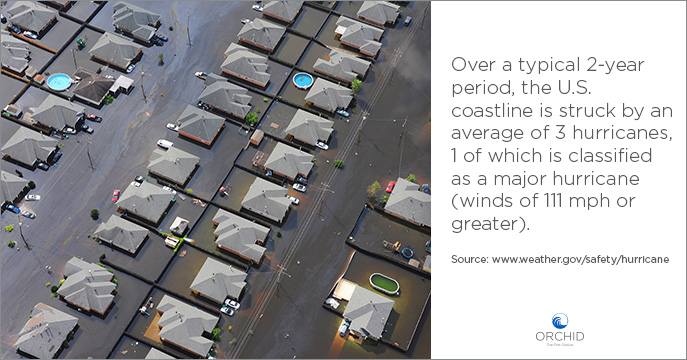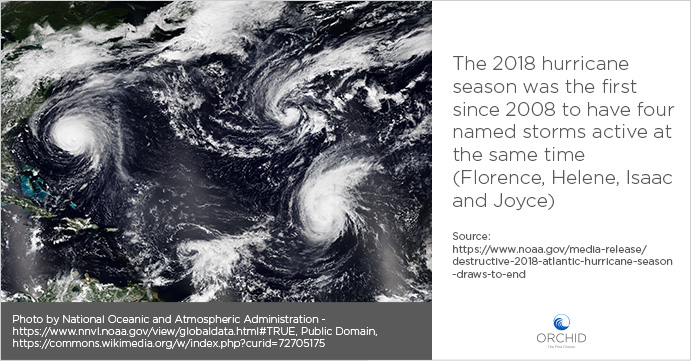If you own a home or business located in the gulf or along the east coast, you’ve most likely had your share of hurricane warnings and you may have even suffered the devastating effects of a storm. Although you can’t stop storms from happening, with preparation you can protect your home, your business and your possessions from their damaging effects. Sometimes, the best way to fight back is to think ahead.
How to Prepare
- Stay up to date with the latest information about approaching storms by monitoring NOAA Weather radio or local television and radio stations.
- Become familiar with your community’s disaster preparedness plan and know your evacuation route. Agree on a common meeting place or single point-of-contact for all family members. If you have pets, create a plan for their evacuation too.
- Fill your vehicles with gas and charge your phone so you’re ready in case of evacuation. Don’t forget to bring your phone charger with you!

- Safeguard your important documents, such as legal papers, birth certificates, marriage license, financial papers and insurance policy information, by keeping them in a safety deposit box or a bolted safe in an interior closet in your home.
- Maintain an emergency supply kit that can sustain you and your family for 72-hours. Your kit should include flashlights, extra batteries, non-perishable food, cash, bottled water, a portable radio, blankets, clothing and toiletries. Replace and replenish the items in your kit every six months.
- Clean up your yard. Trim trees and shrubs. Bring patio and lawn furniture, potted plants, and outdoor bicycles and toys indoors. Close and secure all awnings and tie down any loose items that may become airborne in high wind.

- Ensure windows, doors and skylights are protected with appropriate shutters or impact-resistant glass. Plywood can be used as last-minute protection if you don’t have access to shutters.
- Purchase and regularly test your gas-powered generator and have plenty of fuel to ensure that it’s ready when you need it.
- If you are a collector, make a list of everything in your collection. Include details about any existing damage, as well as the condition of the frames, bases, and cases.
- Secure all interior wall hangings and be sure that items hung on outside walls are taken off the wall and placed in an interior room, at least 3 inches off the floor.
- Secure outside sculptures in burlap or blankets tied with rope, or bring them inside if possible.
- If you’re located in a potential flood zone, move your car to higher ground or park it in your garage. If you don’t have a garage, park in a carport or against the house to protect at least one side from flying debris. Never park under trees, power lines or in low-lying areas.
- For cars in your home garage, park them against the garage doors to keep them from buckling inward and potentially blowing them off the tracks.
- Keep your family emergency kit as well as booster cables and tools, tire repair kit/spare tire, matches, flashlights, shovel and traction mats in your car.
- Keep a copy of your homeowners insurance policy with you in a waterproof container.





